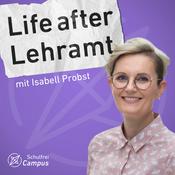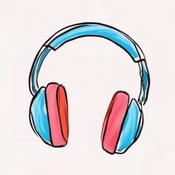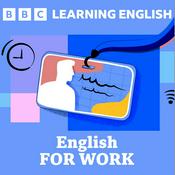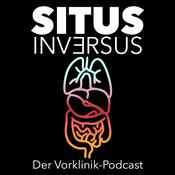Verfügbare Folgen
5 von 139
- BI 226 Tatiana Engel: The High and Low Dimensional BrainSupport the show to get full episodes, full archive, and join the Discord community. The Transmitter is an online publication that aims to deliver useful information, insights and tools to build bridges across neuroscience and advance research. Visit thetransmitter.org to explore the latest neuroscience news and perspectives, written by journalists and scientists. Read more about our partnership. Sign up for Brain Inspired email alerts to be notified every time a new Brain Inspired episode is released. To explore more neuroscience news and perspectives, visit thetransmitter.org. Tatiana Engel runs the Engel lab at Princeton University in the Princeton Neuroscience Institute. She's also part of the International Brain Laboratory, a massive across-lab, across-world, collaboration which you'll hear more about. My main impetus for inviting Tatiana was to talk about two projects she's been working on. One of those is connecting the functional dynamics of cognition with the connectivity of the underlying neural networks on which those dynamics unfold. We know the brain is high-dimensional - it has lots of interacting connections, we know the activity of those networks can often be described by lower-dimensional entities called manifolds, and Tatiana and her lab work to connect those two processes with something they call latent circuits. So you'll hear about that, you'll also hear about how the timescales of neurons across the brain are different but the same, why this is cool and surprising, and we discuss many topics around those main topics. Engel Lab. @engeltatiana.bsky.social. International Brain Laboratory. Related papers: Latent circuit inference from heterogeneous neural responses during cognitive tasks The dynamics and geometry of choice in the premotor cortex. A unifying perspective on neural manifolds and circuits for cognition Brain-wide organization of intrinsic timescales at single-neuron resolution Single-unit activations confer inductive biases for emergent circuit solutions to cognitive tasks. 0:00 - Intro 3:03 - No central executive 5:01 - International brain lab 15:57 - Tatiana's background 24:49 - Dynamical systems 17:48 - Manifolds 33:10 - Latent task circuits 47:01 - Mixed selectivity 1:00:21 - Internal and external dynamics 1:03:47 - Modern vs classical modeling 1:14:30 - Intrinsic timescales 1:26:05 - Single trial dynamics 1:29:59 - Future of manifolds--------1:36:18
- BI 225 Henk De Regt: Understanding in Machines and HumansSupport the show to get full episodes, full archive, and join the Discord community. The Transmitter is an online publication that aims to deliver useful information, insights and tools to build bridges across neuroscience and advance research. Visit thetransmitter.org to explore the latest neuroscience news and perspectives, written by journalists and scientists. Read more about our partnership. Sign up for Brain Inspired email alerts to be notified every time a new Brain Inspired episode is released. To explore more neuroscience news and perspectives, visit thetransmitter.org. Henk de Regt is a professor of Philosophy of Science and the director of the Institute for Science in Society at Radboud University. Henk wrote the book on Understanding. Literally, he wrote what has become a classic in philosophy of science, Understanding Scientific Understanding. Henks' account of understanding goes roughly like this, but you can learn more in his book and other writings. To claim you understand something in science requires that you can produce a theory-based explanation of whatever you claim to understand, and it depends on you having the right scientific skills to be able to work productively with that theory - for example, making qualitative predictions about it without performing calculations. So understanding is contextual and depends on the skills of the understander. There's more nuance to it, so like I said you should read the book, but this account of understanding distinguishes it from explanation itself, and distinguishes it from other accounts of understanding, which take understanding to be either a personal subjective sense - that feeling of something clicking in your mind - or simply the addition of more facts about something. In this conversation, we revisit Henk's work on understanding, and how it touches on many other topics, like realism, the use of metaphors, how public understanding differs from expert understanding, idealization and abstraction in science, and so on. And, because Henk's kind of understanding doesn't depend on subjective awareness or things being true, he and his cohorts have begun working on whether there could be a benchmark for degrees of understanding, to possibly asses whether AI demonstrates understanding, and to use as a common benchmark for humans and machines. Google Scholar page Social: @henkderegt.bsky.social; Book: Understanding Scientific Understanding. Related papers Towards a benchmark for scientific understanding in humans and machines Metaphors as tools for understanding in science communication among experts and to the public Two scientific perspectives on nerve signal propagation: how incompatible approaches jointly promote progress in explanatory understanding 0:00 - Intro 10:13 - Philosophy of explanation vs understanding 14:32 - Different accounts of understanding 20:29 - Henk's account of understanding 26:47 - What counts as intelligible? 34:09 - Hodgkin and Huxley alternative 37:54 - Familiarity vs understanding 44:42 - Measuring understanding 1:02:53 - Machine understanding 1:16:39 - Non-factive understanding 1:23:34 - Abstraction vs understanding 1:31:07 - Public understanding of science 1:41:35 - Reflections on the book--------1:43:30
- BI 224 Dan Nicholson: Schrödinger’s What is Life? RevisitedSupport the show to get full episodes, full archive, and join the Discord community. The Transmitter is an online publication that aims to deliver useful information, insights and tools to build bridges across neuroscience and advance research. Visit thetransmitter.org to explore the latest neuroscience news and perspectives, written by journalists and scientists. Read more about our partnership. Sign up for Brain Inspired email alerts to be notified every time a new Brain Inspired episode is released. To explore more neuroscience news and perspectives, visit thetransmitter.org. My guest today is Dan Nicholson, Assistant Professor of Philosophy at George Mason University, here to talk about his little book, What Is Life? Revisited. Erwin Schrödinger's What Is Life is a famous book that people point to as having predicted DNA and influenced and inspired many well-known biologists ushering in the molecular biology revolution. But Schrödinger was a physicist, not a biologist, and he spent very little time and effort toward understanding biology. What was he up to, why did he write this "famous little book"? Schrödinger had an agenda, a physics agenda. He wanted to save the older deterministic version of quantum physics from the new indeterministic version. When Dan was on the podcast a few years ago, we talked about the machine view of biological systems, how everything has become a "mechanism", and how that view fails to capture what modern science is actually telling us, that organisms are unlike machines in important ways. That work of Dan's led him down this path to Schrödinger's What Is Life, which he argues was a major contributor to that machine metaphor so ubiquitous today in biology. One of the reasons I'm interested in this kind of work is because the cognitive sciences, including neuroscience and artificial intelligence, inherited this mechanistic perspective, and swallowed it so hard that if you don't include the word "mechanism" in your research paper, you're vastly decreasing your chances of getting your work published, when in fact the mechanistic perspective is one super useful perspective among many. Dan’s website. Google Scholar. Social: @NicholsonHPBio; @djnicholson.bsky.social What Is Life? Revisited Previous episode: BI 150 Dan Nicholson: Machines, Organisms, Processes Read the transcript. 0:00 - Intro 7:27 - Why Schrodinger wrote What is Life 15:13 - Aperiodic crystal and the meaning of code 21:39 - Order-from-order, order-from-disorder 28:32 - Appeal to authority 37:48 - Cell as machine 39:33 - Relation between DNA and organism (development) 44:44 - Negentropy 53:54 - Original contributions 58:54 - Mechanistic metaphor in neuroscience 1:16:05 - What's the lesson? 1:28:06 - Historical sleuthing 1:39:49 - Modern philosophy of biology--------1:49:02
- BI 223 Vicente Raja: Ecological Psychology Motifs in NeuroscienceSupport the show to get full episodes, full archive, and join the Discord community. Vicente Raja is a research fellow at University of Murcia in Spain, where he is also part of the Minimal Intelligence Lab run by Paco Cavo, where they study plant behavior, and he is external affiliate faculty of the Rotman Institute of Philosophy at Western University. He is a philosopher, and he is a cognitive scientist, and he specializes in applying concepts from ecological psychology to understand how brains, and organisms, including plants, get about in the world. We talk about many facets of his research, both philosophical and scientific, and maybe the best way to describe the conversation is a tour among many of the concepts in ecological psychology - like affordances, ecological information, direct perception, and resonance, and how those concepts do and don't, and should or shouldn’t, contribute to our understanding of brains and minds. We also discuss Vicente's use of the term motif to describe scientific concepts that allow different researches to study roughly the same things even though they have different definitions for those things, and toward the end we touch on his work studying plant behavior. MINT Lab. Book: Ecological psychology Social: @diovicen.bsky.social Related papers In search for an alternative to the computer metaphor of the mind and brain Embodiment and cognitive neuroscience: the forgotten tales. The motifs of radical embodied neuroscience The Dynamics of Plant Nutation Ecological Resonance Is Reflected in Human Brain Activity Affordances are for life (and not just for maximizing reproductive fitness) Two species of realism Lots of previous guests and topics mentioned: BI 152 Michael L. Anderson: After Phrenology: Neural Reuse BI 190 Luis Favela: The Ecological Brain BI 191 Damian Kelty-Stephen: Fractal Turbulent Cascading Intelligence Read the transcript. 0:00 - Intro 4:55 - Affordances and neuroscience 13:46 - Motifs 39:41- Reconciling neuroscience and ecological psychology 1:07:55 - Predictive processing 1:15:32 - Resonance 1:23:00 - Biggest holes in ecological psychology 1:29:50 - Plant cognition--------1:39:01
- BI 222 Nikolay Kukushkin: Minds and Meaning from Nature’s IdeasSupport the show to get full episodes, full archive, and join the Discord community. The Transmitter is an online publication that aims to deliver useful information, insights and tools to build bridges across neuroscience and advance research. Visit thetransmitter.org to explore the latest neuroscience news and perspectives, written by journalists and scientists. Read more about our partnership. Sign up for Brain Inspired email alerts to be notified every time a new Brain Inspired episode is released. To explore more neuroscience news and perspectives, visit thetransmitter.org. Nikolay Kukushkin is an associate professor at New York University, and a senior scientist at Thomas Carew’s laboratory at the Center for Neural Science. He describes himself as a "molecular philosopher", owing to his day job as a molecular biologist and his broad perspective on how it "hangs together", in the words of Wilfrid Sellers, who in 1962 wrote, “The aim of philosophy, abstractly formulated, is to understand how things in the broadest possible sense of the term hang together in the broadest possible sense of the term”. That is what Niko does in his book One Hand Clapping: Unraveling the Mystery of the Human Mind. This book is about essences across spatial scales in nature. More precisely, it's about giving names to what is fundamental, or essential, to how things and processes function in nature. Niko argues those essences are where meaning resides. That's very abstract, and we'll spell it out more during the discussion. But as an example at the small scale, the essences of carbon and oxygen, respectively, are creation and destruction, which allows metabolism to occur in biological organisms. Moving way up the scale, following this essence perspective leads Niko to the conclusion that there is no separation between our minds and the world, and that instead we should embrace the relational aspect of mind and world as a unifying principle. On the way, via evolution, we discuss many more examples, plus some of his own work studying how memory works in individual cells, not just neurons or populations of neurons in brains. Niko's website. Twitter: @niko_kukushkin. Book: One Hand Clapping: Unraveling the Mystery of the Human Mind Read the transcript. 0:00 - Intro 9:28 - Studying memory in cells 10:14 - Who the book is for 17:57 - Studying memory in cells 21:53 - What is memory? 29:49 - Book 29:52 - How the book came about 37:56 - Central message of the book 44:07 - Meaning in nature 49:09 - Meaning and essence 51:55 - Multicellularity and ant colonies 57:43 - Eukaryotes and complexification 1:03:38 - Why do we have brains? 1:06:17 - Emergence 1:10:58 - Language 1:12:41 - Human evolution 1:14:41 - Artificial intelligence, meaning and essences 1:25:49 - Consciousness--------1:28:26
Weitere Bildung Podcasts
Trending Bildung Podcasts
Über Brain Inspired
Neuroscience and artificial intelligence work better together. Brain inspired is a celebration and exploration of the ideas driving our progress to understand intelligence. I interview experts about their work at the interface of neuroscience, artificial intelligence, cognitive science, philosophy, psychology, and more: the symbiosis of these overlapping fields, how they inform each other, where they differ, what the past brought us, and what the future brings. Topics include computational neuroscience, supervised machine learning, unsupervised learning, reinforcement learning, deep learning, convolutional and recurrent neural networks, decision-making science, AI agents, backpropagation, credit assignment, neuroengineering, neuromorphics, emergence, philosophy of mind, consciousness, general AI, spiking neural networks, data science, and a lot more. The podcast is not produced for a general audience. Instead, it aims to educate, challenge, inspire, and hopefully entertain those interested in learning more about neuroscience and AI.
Podcast-WebsiteHöre Brain Inspired, 6 Minute English und viele andere Podcasts aus aller Welt mit der radio.de-App
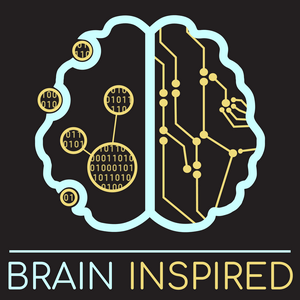
Hol dir die kostenlose radio.de App
- Sender und Podcasts favorisieren
- Streamen via Wifi oder Bluetooth
- Unterstützt Carplay & Android Auto
- viele weitere App Funktionen
Hol dir die kostenlose radio.de App
- Sender und Podcasts favorisieren
- Streamen via Wifi oder Bluetooth
- Unterstützt Carplay & Android Auto
- viele weitere App Funktionen


Brain Inspired
Code scannen,
App laden,
loshören.
App laden,
loshören.


















